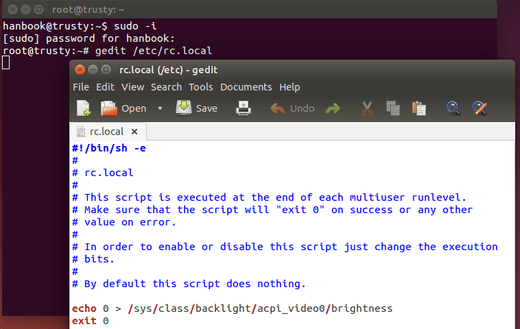

- #How to exit from gedit in ubuntu 16.04 install#
- #How to exit from gedit in ubuntu 16.04 archive#
- #How to exit from gedit in ubuntu 16.04 software#
See Debootstrap Chroot and Installing Mandriva Linux in a Chroot for more advanced set-up instructions.Īccessing graphical applications inside the chroot
#How to exit from gedit in ubuntu 16.04 install#
Use apt-get install package_name to install packages. Very few packages are installed by default in a chroot (even sudo isn't installed).

#How to exit from gedit in ubuntu 16.04 archive#
Note: You must change the above with the URL of a valid archive mirror local to you.Ī basic chroot should now have been created. Note: You can replace lucid with the Ubuntu version of your choice. It may take a while for the packages to be downloaded. This will create a basic 'installation' of Ubuntu 10.04 (Lucid Lynx) in the chroot.

To do this, type sudo mkdir /var/chroot into a command line.Īs an administrator, open /etc/schroot/nf in a text editor. In this procedure, the directory /var/chroot will be used. using sudo), create a new directory for the chroot. Install the schroot and debootstrap packages.Īs an administrator (i.e. For more advanced chroots, see Debootstrap Chroot. This section provides instructions on creating a basic chroot.
#How to exit from gedit in ubuntu 16.04 software#
Note that it is possible for software from outside the chroot to access files inside the chroot. This prevents applications inside the chroot from interfering with files elsewhere on your computer. As the root directory is the top of the filesystem hierarchy, applications are unable to access directories higher up than the root directory, and so are isolated from the rest of the system. Technically-speaking, chroot temporarily changes the root directory (which is normally /) to the chroot directory (for example, /var/chroot). In many ways, a chroot is like installing another operating system inside your existing operating system. This document explains the basic concepts surrounding the use of a chroot and provides instructions for getting a basic chroot up and running.Ī chroot is basically a special directory on your computer which prevents applications, if run from inside that directory, from accessing files outside the directory. This is particularly useful if you are testing an application which could potentially alter important system files, or which may be insecure. Accessing graphical applications inside the chrootĪ chroot is a way of isolating applications from the rest of your computer, by putting them in a jail.


 0 kommentar(er)
0 kommentar(er)
